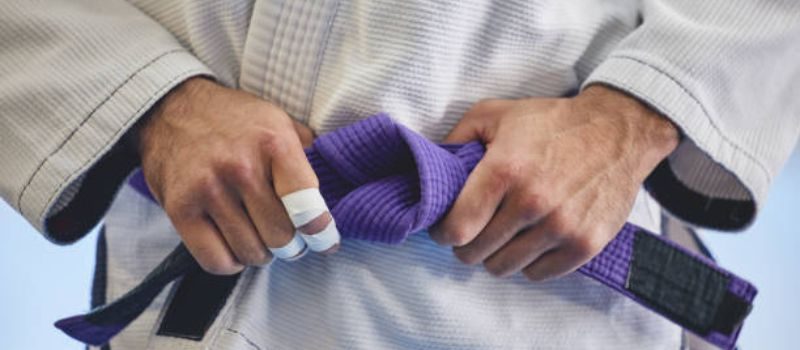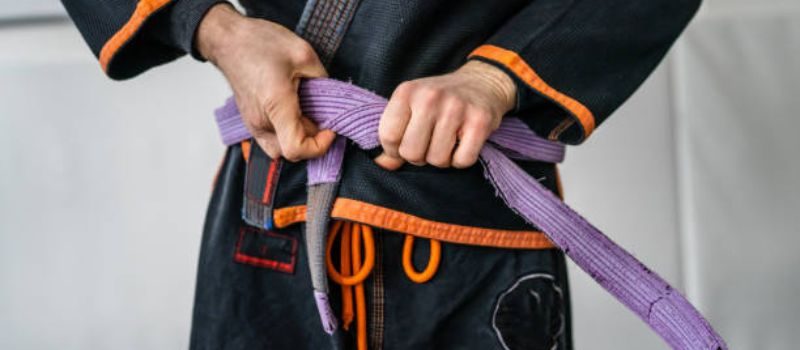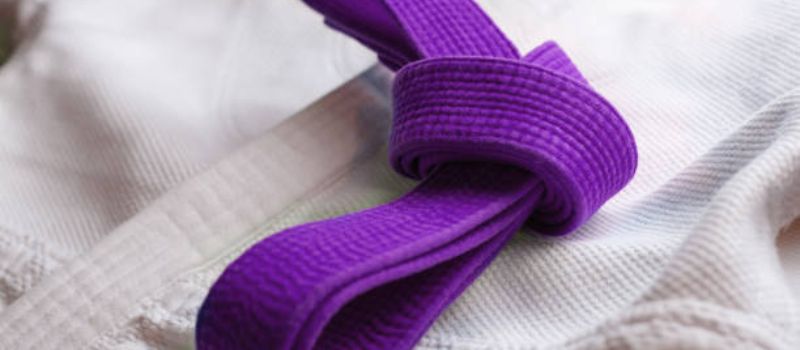As a passionate practitioner of Brazilian Jiu Jitsu (BJJ), reaching the purple belt level is a significant milestone in your journey. It represents a solid foundation of knowledge and skills that sets you apart from beginners. The purple belt is often regarded as a turning point, where practitioners begin to delve deeper into the intricacies of BJJ. In this article, I will discuss the importance of achieving this belt and explore the fundamental techniques that every practitioner should master.
The Significance of Achieving the Purple Belt Bjj
The purple belt bjj is the gateway to the advanced levels of the art. It signifies that you have developed a strong foundation and are now ready to deepen your understanding of the techniques and strategies involved. It is a testament to your commitment, dedication, and perseverance. This belt represents a stage where you begin to apply your knowledge in a more creative and fluid manner, adapting techniques to suit your own style. It is a recognition of your progress and a stepping stone towards further growth and development.

Fundamental Techniques for Purple Belt Practitioners
At the purple belt jiu jitsu level, practitioners should have a solid understanding of the core techniques in BJJ. This includes a wide range of positions, submissions, escapes, and transitions. Some essential techniques that every belt should master are:
Guard Retention:
You should have a strong guard that is difficult for your opponents to pass. Focus on maintaining proper posture, using grips effectively, and utilizing frames and hip movement to create space.
Sweeps:
Sweeping your opponent from the bottom position is crucial at this belt level. Work on techniques such as scissor sweep, flower sweep, and butterfly sweep to off-balance your opponent and gain the top position.
Submissions:
These belts should have a diverse arsenal of submissions. Mastering techniques like arm bars, triangles, chokes, and joint locks from various positions will allow you to finish fights efficiently.
What's Required to Be Promoted to bjj Purple Belt?
The criteria for being promoted to the bjj purple belt vary from academy to academy, but there are some common factors that are considered. Firstly, technical proficiency is crucial. You should demonstrate a solid understanding of the fundamental techniques and be able to execute them with precision and control. Additionally, your ability to apply these techniques in live sparring is essential. You should be able to effectively implement your skills against resisting opponents. Lastly, your attitude and commitment to the art are also taken into account. Regular attendance, a positive mindset, and a willingness to help others progress are all important qualities.
How Do You Know When You're Ready to Be Promoted to jiu jitsu Purple Belt?
The readiness for a promotion to this belt is not solely determined by the number of training hours or the time spent at the previous belt level. It is a combination of technical ability, mat experience, and personal growth. When you start consistently dominating opponents of the same rank in sparring, showcasing a deep understanding of BJJ concepts, and displaying a high level of control and technique, you may be on the cusp of receiving your purple belt. However, it is ultimately up to your instructor to evaluate your progress and decide if you are ready for the next step.
Can Purple Belts Teach Classes?
While belts may not have the same level of experience as higher-ranked practitioners, they can still play an important role in the BJJ community by assisting with classes and sharing their knowledge. Teaching classes can be a valuable learning experience, as it requires you to have a thorough understanding of the techniques you are teaching. It also helps reinforce your own knowledge and allows you to develop your communication and leadership skills. However, it is important to remember that purple belts jiu jitsu should always defer to higher-ranked instructors and seek guidance when needed.

Purple Belts Promoting Students?
In some academies, these belts may be given the responsibility of promoting students to their next belt level. This is a testament to their knowledge, experience, and ability to assess the progress of their training partners. However, the decision to grant this authority to this belt varies among different schools and instructors. It is an honor and a responsibility that should be taken seriously, as it reflects the trust and confidence that the instructor has in this belt’s ability to evaluate and guide their fellow students.
Advanced Guard Passing Techniques
Your guard passing game should be well-developed. Advanced guard passing techniques can help you navigate through your opponent’s defenses and establish dominant positions. Here are a few techniques to add to your arsenal:
Leg Drag:
The leg drag is a powerful guard pass that involves controlling your opponent’s legs and dragging them to the side, exposing their back or allowing you to establish side control.
Knee Slide Pass:
The knee slide pass is a versatile technique that involves sliding your knee across your opponent’s thigh while controlling their upper body. This pass can be used from various guard positions, such as the butterfly guard or the half guard.
Torreando Pass:
The torreando pass is a classic guard pass that involves controlling your opponent’s legs and quickly moving to the opposite side, clearing their guard and establishing a dominant position.
Effective Submissions from the Top Position
When you have successfully passed your opponent’s guard and established a dominant top position, it is essential to have a variety of effective submissions at your disposal. Here are some submissions that every purple belt should be proficient in:
Arm Triangle Choke:
The arm triangle choke, also known as the head and arm choke, is a powerful submission that can be applied from side control or the mount. It involves trapping your opponent’s arm and applying pressure to their carotid arteries with your shoulder.
Kimura Lock:
The kimura lock is a versatile submission that can be applied from various positions, including side control, mount, and half guard. It involves isolating your opponent’s arm and applying a twisting pressure to their shoulder joint.
Rear Naked Choke:
The rear naked choke is one of the most effective submissions in BJJ. It is applied from the back position and involves wrapping your arm around your opponent’s neck, applying pressure to their carotid arteries.

Escapes and Defenses
While being on the offensive is important, these belts must also develop strong defensive skills to survive in challenging situations. Here are some escapes and defenses that every practitioner should be familiar with:
Bridge and Roll Escape:
The bridge and roll escape is a fundamental technique that can be used to escape from the mount or side control. It involves bridging your hips off the mat and rolling your opponent over your shoulder to regain a better position.
Guillotine Defense:
The guillotine choke is a common submission that can be applied from various positions. Knowing how to defend against it by tucking your chin, controlling your opponent’s arms, or using proper hand fighting techniques is crucial.
Triangle Escape:
The triangle choke is a highly effective submission that can be challenging to escape. However, understanding the mechanics of the triangle and implementing proper posture and positioning can help you escape and avoid being submitted.
From Purple to Brown Belt in BJJ
You may start contemplating the journey towards the brown belt. Transitioning from purple to brown belt requires further refinement of your skills and a deeper understanding of the art. It is a period where you continue to expand your knowledge and explore more advanced techniques. To progress to the brown belt level, you should focus on refining your existing techniques, expanding your repertoire, and consistently challenging yourself by training with higher-ranked practitioners.
Training Tips
To make the most of your journey , here are some training tips to consider:
Set Specific Goals:
Identify areas of your game that need improvement and set specific goals to work towards. Whether it’s developing a particular submission or improving your guard passing, having clear objectives will help guide your training.
Seek Feedback:
Actively seek feedback from higher-ranked practitioners and your instructors. Their guidance and constructive criticism will help you identify areas for improvement and accelerate your progress.
Train with a Variety of Partners:
It is important to train with a diverse group of training partners. Different body types, styles, and skill levels will challenge you in unique ways and expose you to different techniques and strategies
The Mental Aspect
As you progress through the ranks of BJJ, the mental aspect becomes increasingly important.It is a time where you may encounter challenges, plateaus, and moments of self-doubt. Developing mental resilience, perseverance, and a growth mindset is crucial. Embrace the journey, stay motivated, and remember that every setback is an opportunity for growth.
Conclusion
Reaching this belt level in BJJ is a significant achievement that opens the door to advanced techniques and strategies. It represents a solid foundation of knowledge and skills, as well as a commitment to continuous improvement. Continue to refine your techniques, expand your repertoire, and challenge yourself both mentally and physically. Embrace the journey, stay dedicated, and enjoy the process of mastering the purple belt in BJJ.
FAQ
Q: How long does it take to get a purple belt in BJJ?
A: The time it takes to achieve ths belt in BJJ varies for each individual. It depends on factors such as training frequency, consistency, natural talent, and dedication to the art. On average, it can take several years of consistent training to reach this belt level.
Q: Can I compete as a purple belt in BJJ?
A: Yes, you are eligible to compete in BJJ tournaments. Competing can be a valuable experience that helps you test your skills, gain exposure to different styles, and gauge your progress.
Q: Can I train with higher-ranked practitioners as a purple belt?
A: Absolutely! Training with higher-ranked practitioners is essential for your growth. It allows you to challenge yourself, learn from more experienced individuals, and gain insights into advanced techniques and strategies.
Feel free to comment down there,what you think about this blog



IsCAxJGEFHrKYTSe